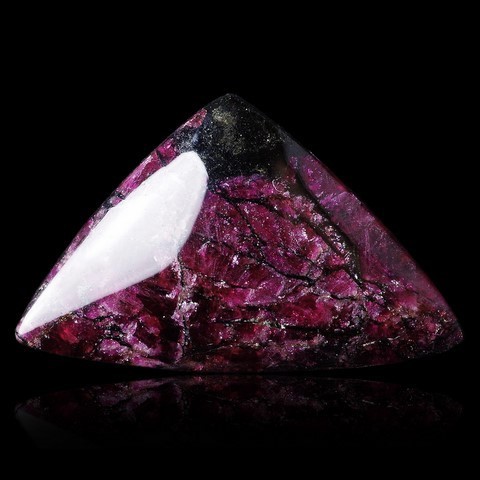EUDIALYTE
Class : Silicates
Subclass : Cyclosilicates
Crystal system : Trigonal
Chemistry : Na4(Ca, Ce, Fe)3 ZrSi6O17(OH, Cl)2
Rarity : Rare
Eudialyte is an exclusive mineral of nepheline syenites and associated pegmatites. It owes its name to the Greek eu (good) and diallusis (dissolution), because it is very easily attacked by acids. It occurs in frequently flattened crystals or very modified rhombohedra with pseudo-octahedral habit, sometimes prismatic but the developed crystals are rare ; it is also massive or in unformed grains. Its color evolves from the wine-lee to a beautiful purple (eucolite variety a little richer in iron), passing through red tones that recall the pyrope ; more rarely it is yellow-orange to brown. Eudialyte is very sensitive to weathering and easily destroys on outcrops. It is a rare mineral sought after by mineral collectors who is also much used in jewelry (cut in cabochons).
Eudialyte in the World
Eudialyte in France
In France, eudyalite is known in millimetric crystals in the nepheline syenite of Fitou in Aude department.
Twinning and special crystallizations
Fakes and scams
No fakes reported for this mineral species.
Hardness : 5 to 6
Density : 2.74 to 3.1
Fracture : Irregular
Trace : Pink
TP : Translucent
IR : 1.606 to 1.613
Birefringence : 0.004
Optical character : Uniaxe +/-
Pleochroism : Weak
Fluorescence : None
Solubility : Acids
Magnetism : None
Radioactivity : None


